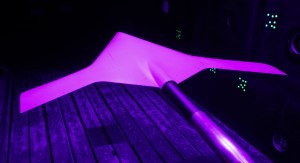Eight teams participating in the 2023 Gateways to Blue Skies: Clean Aviation Energy (Blue Skies) Competition have been selected to present their design concepts.
Eight teams participating in the 2023 Gateways to Blue Skies: Clean Aviation Energy (Blue Skies) Competition have been selected to present their design concepts to a panel of industry experts at the 2023 Blue Skies Forum, June 1-2, 2023, at NASA’s Glenn Research Center.
Sponsored by NASA’s Aeronautics Research Mission Directorate (ARMD), this year’s Blue Skies Competition asked teams of university students to research and conceptualize the source-to-flight lifecycle of one potential clean aviation energy source of the 2050s, in terms of feasibility, viability and environmental impact, and to submit a five to seven-page proposal and a video summarizing their concept.
“We gave the students a unique problem to tackle this year,” said Steven Holz, NASA Aeronautics University Innovation Assistant Project Manager and Blue Skies judge and co-chair. “We really challenged them to think creatively and come up with ideas to enable alternative aviation energy sources that aren’t considered mainstream. The finalists put forth well thought out solutions, and we are all excited to hear more from them at the upcoming Forum.”
The 2023 Gateways to Blue Skies: Clean Aviation Energy finalist projects represent diversity across energy types, including metal, hydrogen, energy beaming, and nuclear. Finalist teams are:
Boston University
Aluminum Powder Combustion
Advisor: James Geiger
Boston University
Iron Powder as a Clean Aviation Fuel Source
Advisor: Dr. Anthony Linn
Carnegie Mellon University
A Pathway to the Fuel of the Future: Hydrogen’s Role in Aviation Decarbonization
Advisors: Dr. Peter Zhang, Dr. Jared Cohon
Manhattan College
High on Hydrogen!
Advisor: Dr. Bahareh Estejab
Ohio State University
Project Source to Soar
Advisor: Dr. Bhavik Bakshi
Texas A&M University
Nuclear Aviation Project
Advisor: Dr. Ahmed Abdelaal
University of California, San Diego
Aircraft Propulsion by Directed Energy Beam Bursts (DEB-B)
Advisor: Dr. Sylvia Herbert
University of Texas, Austin
A Life Cycle Analysis of Space-Based Solar Power for Aircraft
Advisor: Dr. Christian Claudel
As the aviation industry moves into the future of Zero Emission Aviation by 2050, planes and airports of today will be vastly different in tomorrow’s landscape. Developing green technologies and designs are imperative to enable aircraft to fly safer, faster, cleaner, and quieter. Though the proportion of harmful global emissions due to aviation is low, increased air travel demand and dependence on fossil fuels has created a critical global issue that warrants the move toward new energy sources.
“As we push towards climate-friendly aviation, NASA is playing an integral role in developing clean energy solutions, and who better to engage with in that endeavor than the next generation of environmentally conscious, career-minded university students,” said Andy Provenza, NASA aerospace research engineer and Blue Skies sponsor. “It is refreshing to see the ideas these young minds have brought to the table.”
The eight finalist teams receive $6,000 stipends to facilitate full participation in the competition, including presenting their design concepts at the 2023 Blue Skies Forum in Cleveland, Ohio, in June, which will be livestreamed globally. Winning team members earn a chance to intern at one of NASA’s Aeronautics centers in the 2023-24 academic year.
The 2022 Gateways to Blue Skies competition is sponsored by NASA’s Aeronautics Research Mission Directorate’s (ARMD’s) University Innovation Project (UI) and is managed by the National Institute of Aerospace (NIA).
For more on the Gateways to Blues Skies: Clean Aviation Energy competition, visit https://blueskies.nianet.org.































